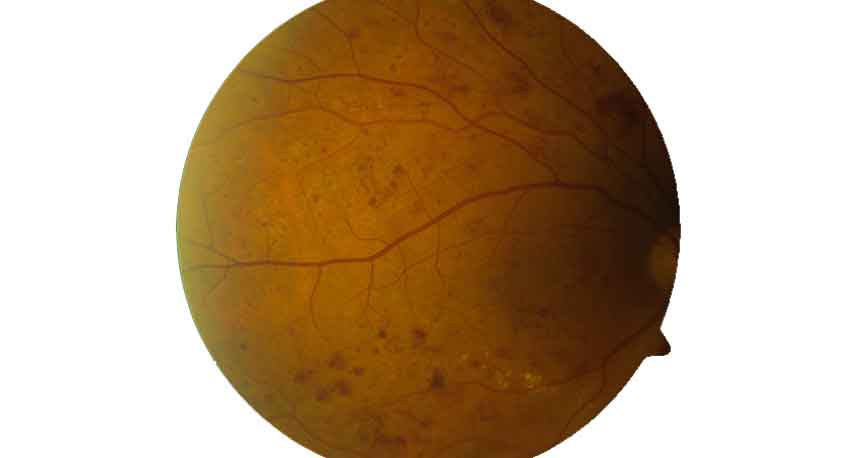Diabetic Retinopathy
One very severe complication of diabetes mellitus affects the eyes. In cases of poorly controlled diabetes, it may lead to damage of the retina.
The earliest changes are small microaneurysms and small hemorrhages that generally only need to be followed up regularly. There are, however, other, more serious complications.
For one, a swelling at the centre of the retina, the so-called “macula” may ensue. This leads to impaired eyesight which patients experience as distorted or blurred vision, particularly while reading or in very severe cases, recognizing faces.
Another very serious complication is the formation of new blood vessels originating from either the optic nerve head or from the retinal periphery (“proliferative diabetic retinopathy”) due to the shortage of oxygen in the retina. The new blood vessels are very fragile and may lead to bleeding in the vitreous humour. Uncontrolled growth of such vessels may also lead to retinal detachment.
diabetic macular edema

diabetic retinopathy

Treatment (Diabetic macular edema)
- Intravitreal injection (IVI) with anti-angiogenic drugs: This form of treatment specifically inhibits metabolic factors in the retina and vascular tissue that promote neovascularization and swelling. A variety of drugs are available. As there is a high probability of improving vision upon completion, this is the primary mode of treatment. Frequent re-treatment can be necessary. The drugs are injected into the vitreous humour, the therapy is performed in the practice.
- Steroid depot therapy: In this form of therapy, a small cylinder (implant) is placed in the vitreous humour, which continually produces steroids for four months. Steroids have a very strong anti-inflammatory and edema-reducing effect on the retina. This operation has the advantage of making further therapy unnecessary for four months (unlike conventional intravitreal injections). The drawbacks are a significant rise in intraocular pressure in 10% of all patients and cataract development. This therapy usually needs to be performed in a hospital on an outpatient basis.
-
Laser: In this procedure, a low-intensity laser spots are placed around the centre of the retina. The laser beam triggers the pumping function of the pigment epithelial layer of the retina and activates the body’s own immune system so that cells are recruited to the area in order to reduce or eliminate swelling. As laser therapy is not as efficient as IVI or steroid depot treatment in improving vision, it is generally used for recalcitrant cases. Occasionally, this treatment needs to be repeated in cases of residual swelling.
-
Vitrectomy: In rare cases of highly persistent swelling, surgical removal of the vitreous humour may be necessary.
Treatment (Proliferative diabetic retinopathy)
- Laser: In this treatment, laser spots are placed on the periphery of the retina to improve oxygen supply to the central retina, especially the macula, and to reduce the requirements of the periphery. The improved oxygen supply eliminates the stimulus for the retina to form new blood vessels, which then involute or become a scar.
-
Intravitreal injection (IVI) with anti-angiogenic drugs: this therapy inhibits metabolic factors that trigger neovascularisation. This process is currently used when laser treatment alone proves to be insufficient. The drugs are injected into the vitreous humour; the therapy can be performed in the practice.
-
Vitrectomy: In cases of vitreous hemorrhage and/or retinal detachment, surgical removal of the hemorrhage and repair of the retina is necessary.

